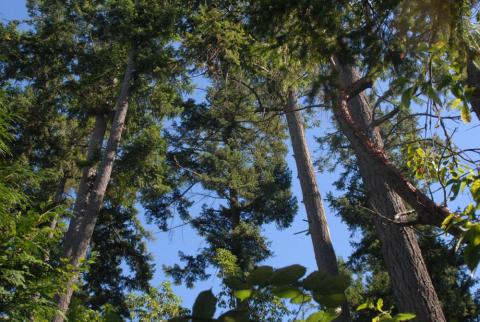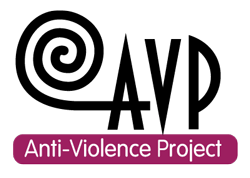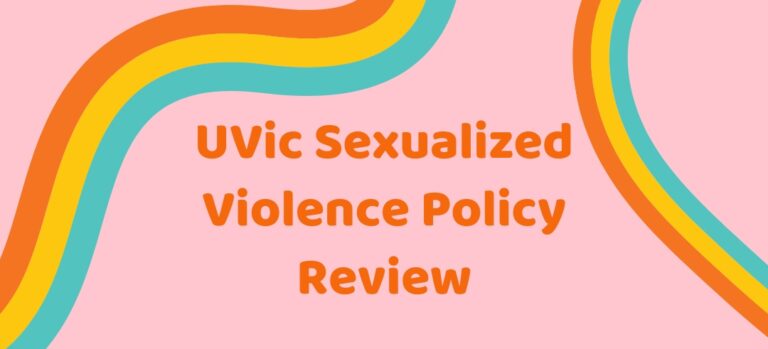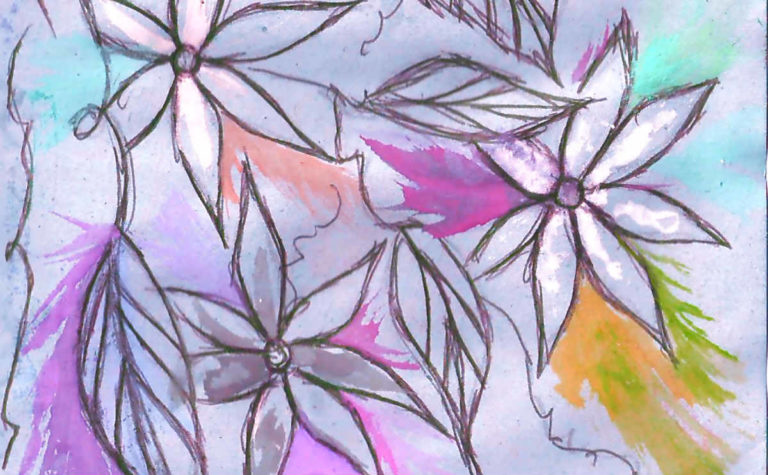Developing in the Cunningham Woods is not a solution to Sexualized Violence

The University of Victoria has recently released a draft of the 10 year campus plan, which includes a proposal to construct a building in the Cunningham Woods. The development is partially inspired by recent student feedback about safety concerns in the dark, wooded areas on campus, including the pathway through Cunningham Woods to the Engineering and Computer Science building. In response to these safety concerns, the proposed building will serve as a “natural surveillance” system, which will deter violence in the area. There is a lot to be said about the ecological, educational, and cultural value that these woods represent (and that the development would threaten), but the focus of this discussion will be on gender based violence, and how this is connected to safety and the development of land on campus.
Let’s be clear; the development of land is an active and ever-present element of colonization, and it is inherently linked to gender based violence. The Lekwungen and WSANEC territories on which the University of Victoria resides was taken and developed by settlers without consent, and continues to be occupied (and developed) without consent. This entitlement over land is linked to entitlement over other people’s bodies, and the broader rape culture in which we all live and participate.
The theory of natural surveillance is that if one believes they are being observed, then they will be deterred from committing a crime. Under this assumption, safety can be increased by the construction of a building in the Cunningham Woods. However, most offices on campus are closed by 4:30pm, and student hubs like Mystic Market and many vendors in the SUB close by 7pm. Excluding the Law Library and McPherson Library, there are very few buildings on campus which are occupied late into the evening. Thus the limited hours of potential “surveillance” from a building may create an illusion of safety in the area, but it does not stop sexualized violence.

Getting right down to it, the natural surveillance approach does not address broader systemic issues. It also distracts us from these issues by assuming that violence can be addressed with physical changes to the environment, instead of focusing on how to change people’s interactions with one another, and how to respect personal boundaries. Development is a band-aid solution for the larger problem of rape culture on university campuses and in our daily lives. Rape culture thrives off of the violation of land and bodies and is one of the products of colonization. To use environmental development as a supposed method of addressing sexualized violence actually re-enacts violent processes that are inherently colonial. Addressing rape culture means looking at the ways in which we as a culture glorify, and normalize sexual assault, and allow it to continue.
When faced with the reality that the majority of assaults happen between people who know each other, often in the person’s car or in their home, it becomes apparent that this tactic also does not address where the majority of assaults are taking place. This is not to say that assaults in public by strangers do not happen (because they do) but focusing our attention on these is a misguided and potentially damaging focus, as it misses out on a vast majority of cases.
AVP takes a preventative approach in resisting rape culture and the systems of power that perpetuate sexualized violence, to dismantle the culture and systems that allow sexualized violence to occur. This looks like workshops on consent and bystander intervention, working with people who have caused harm, and supporting other organizations that work to resist and prevent violence in our communities. While actions such as support for survivors and creating safety for folks is also super valuable (and also something AVP provides), a focus on prevention means that eventually we won’t have to provide support for people who have experienced harm, and people won’t need to feel unsafe while walking at night. Ideally we work to create a culture where sexualized violence is eliminated, and if it does occur there is a support system in the community to hold the survivor up while also holding the person who caused the harm accountable to that violence.
Concerns regarding campus rape culture have been brought to the forefront of mainstream conversations recently, following multiple high-profile incidents, such as the Dalhousie dentistry school scandal and the UBC frosh student rape chants. This has opened up discussions on how we as a university community can create safety on campuses. Educational programs and working with people who have caused harm is a rad way for us to engage in work which aims to prevent sexualized violence on campus. When thinking specifically about Cunningham Woods, it is crucial that we address students concerns regarding safety, but that we do so without perpetuating myths of sexualized violence, and that we do not recreate colonization practices in the process.
Addressing concerns about safety within the context of rape culture allows us to move beyond band-aid solutions and create real cultural shifts. Less ecologically disruptive solutions to this safety issue include the installation of lights on the existing pathway within Cunningham Woods, coupled with education and advocacy on sexualized violence. As a community, the University of Victoria must confront sexualized violence within the societal context of rape culture, which has normalized this violence. With prevention based education, we can work together to create a long-lasting solution.
If you’re concerned about the proposed development of Cunningham Woods for the reasons above, or because of its potential to errode the Woods’ ecological, academic, and intrinsic value, you can sign a student organized petition in opposition: http://www.ipetitions.com/petition/protect-cunningham-woods-from-development
The Campus Planning Committee is also accepting feedback on the plan until November 10th, and you can email them your comments at: campusplanupdate [at] uvic [dot] ca
Post written by meg neufeld and Paige Bennet






